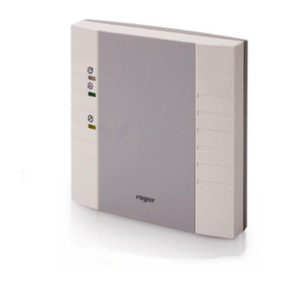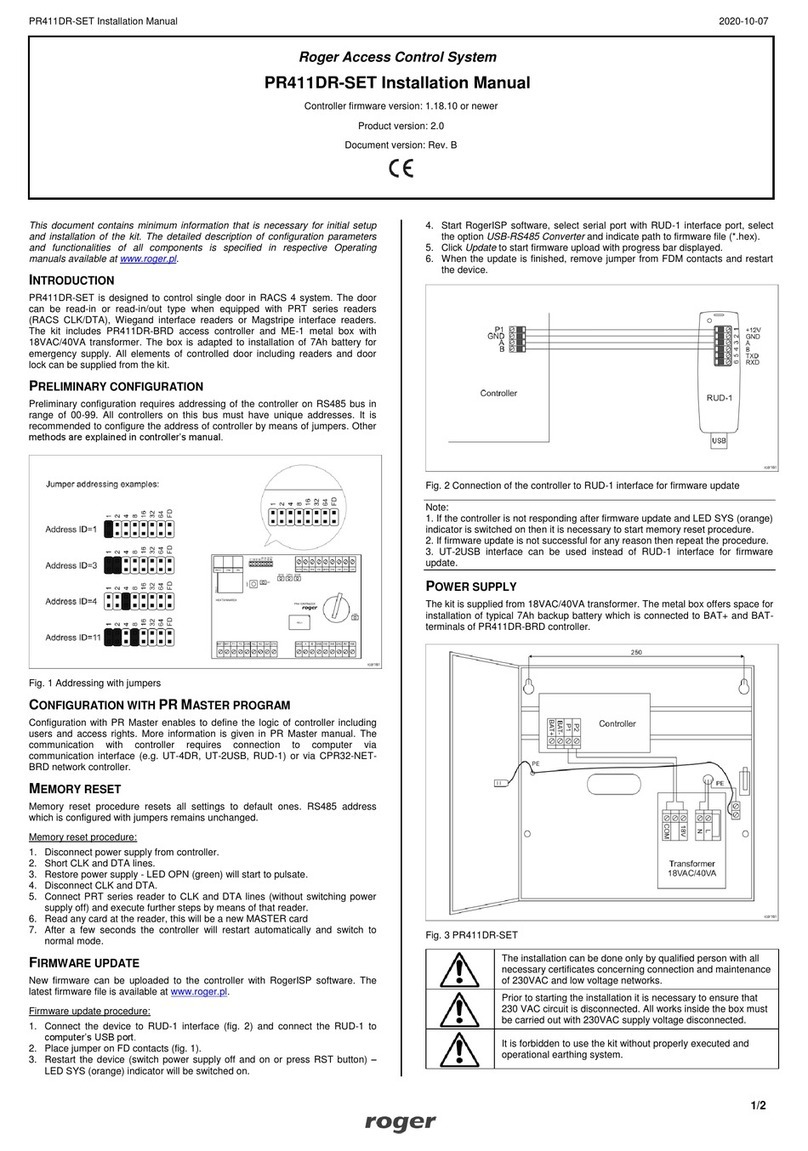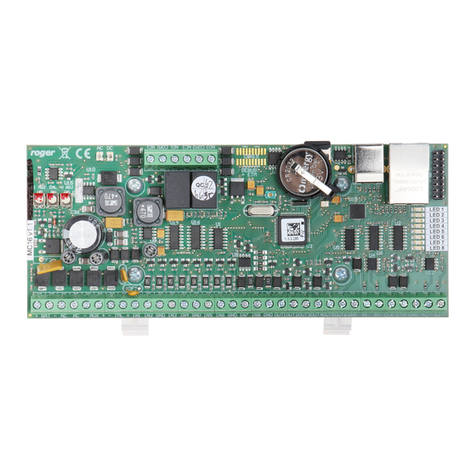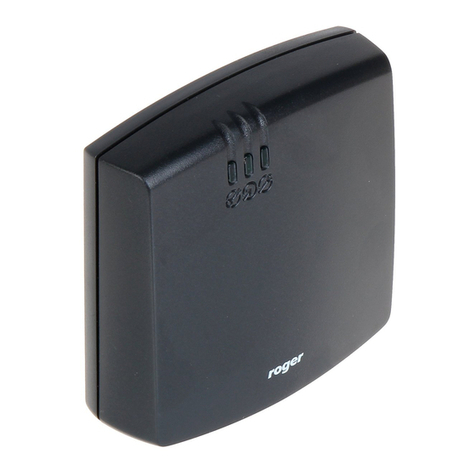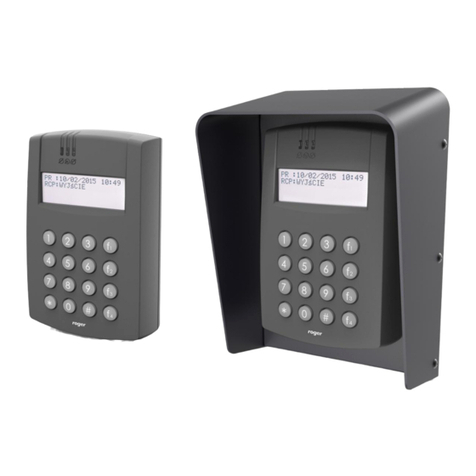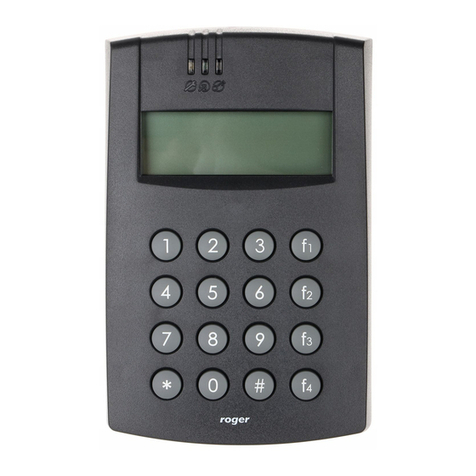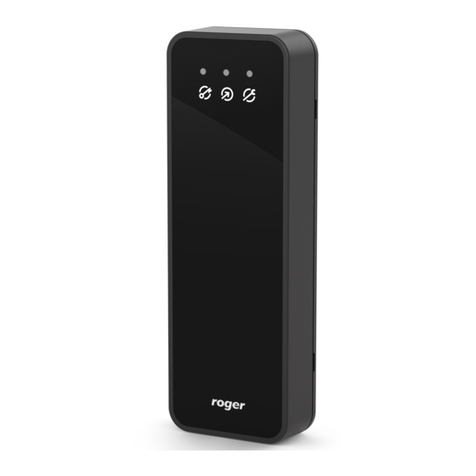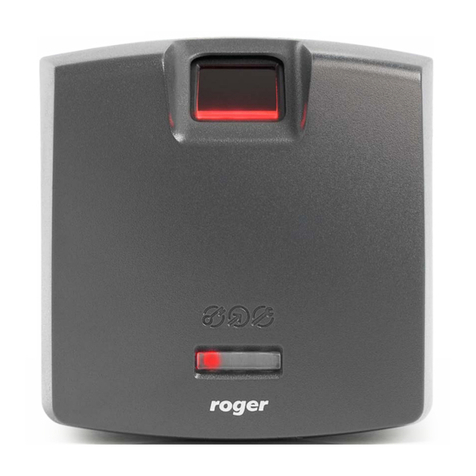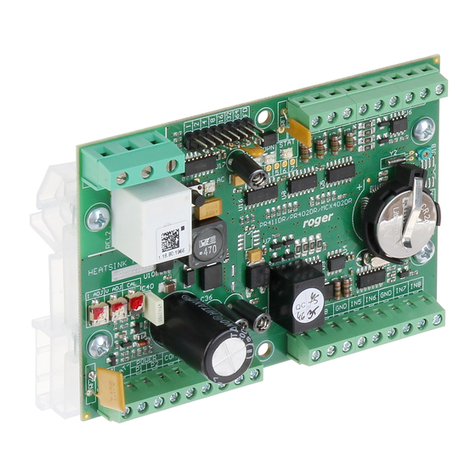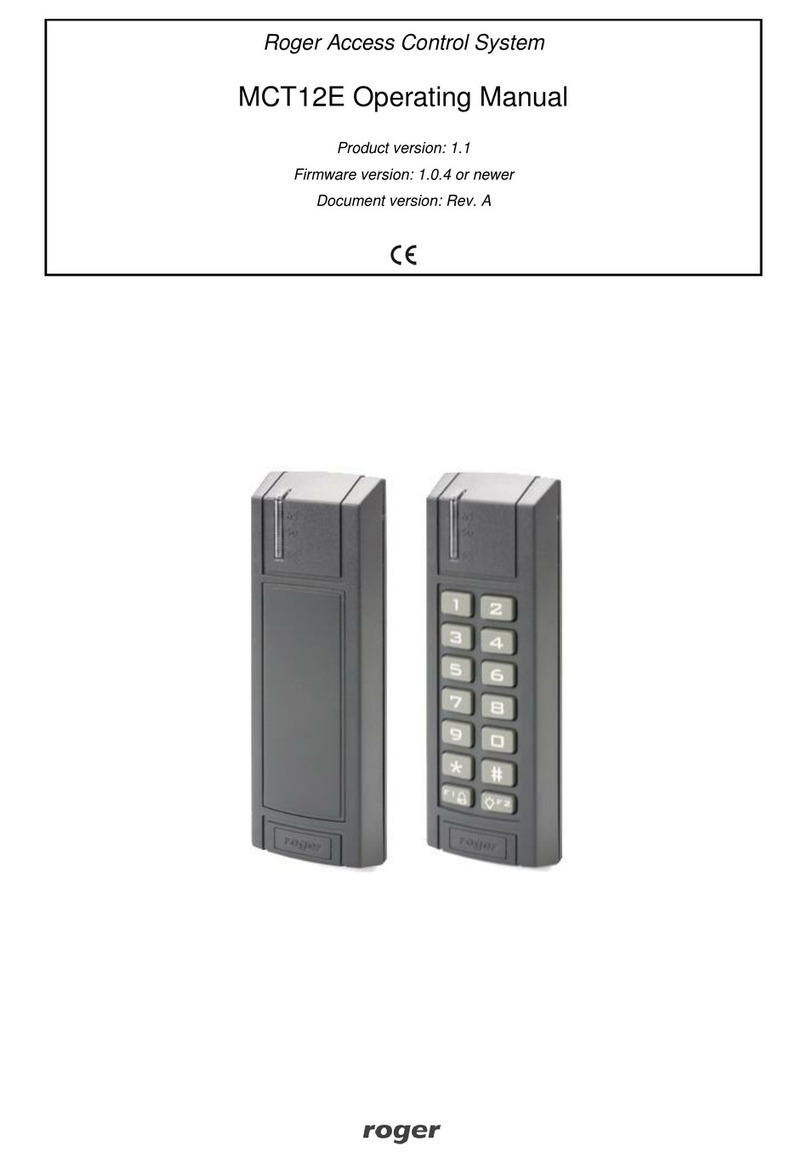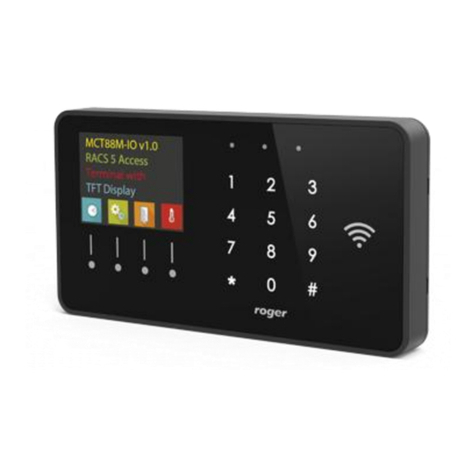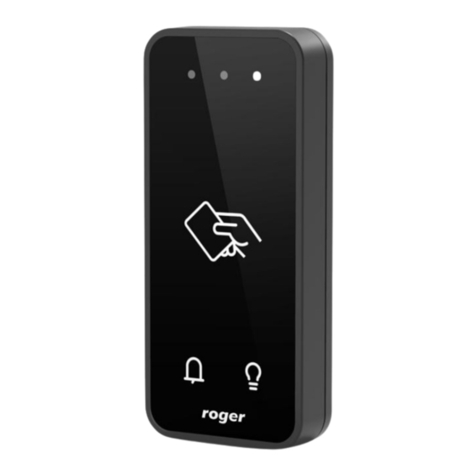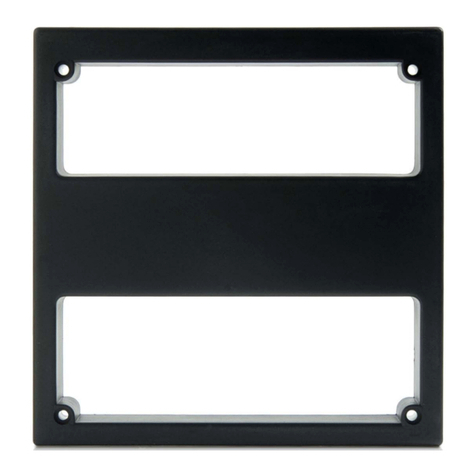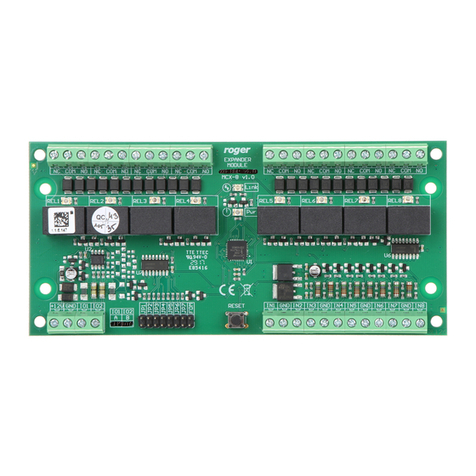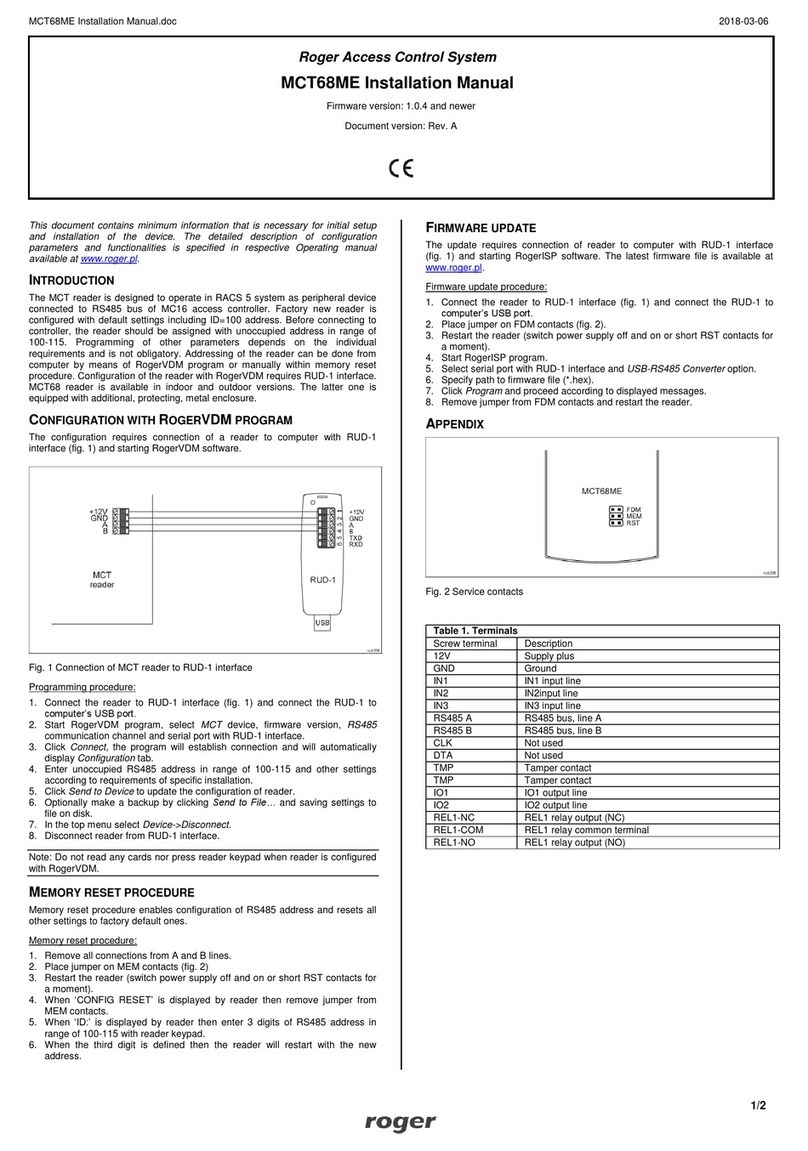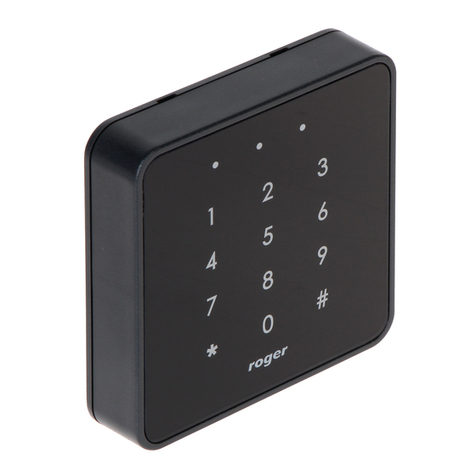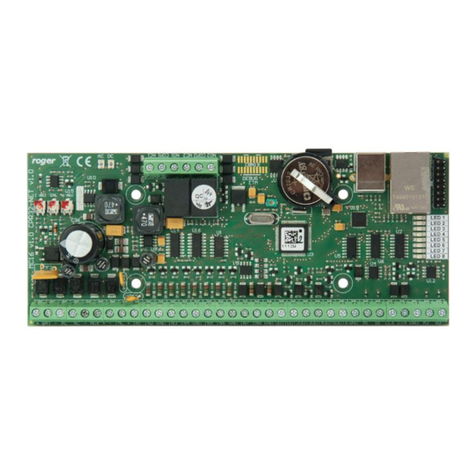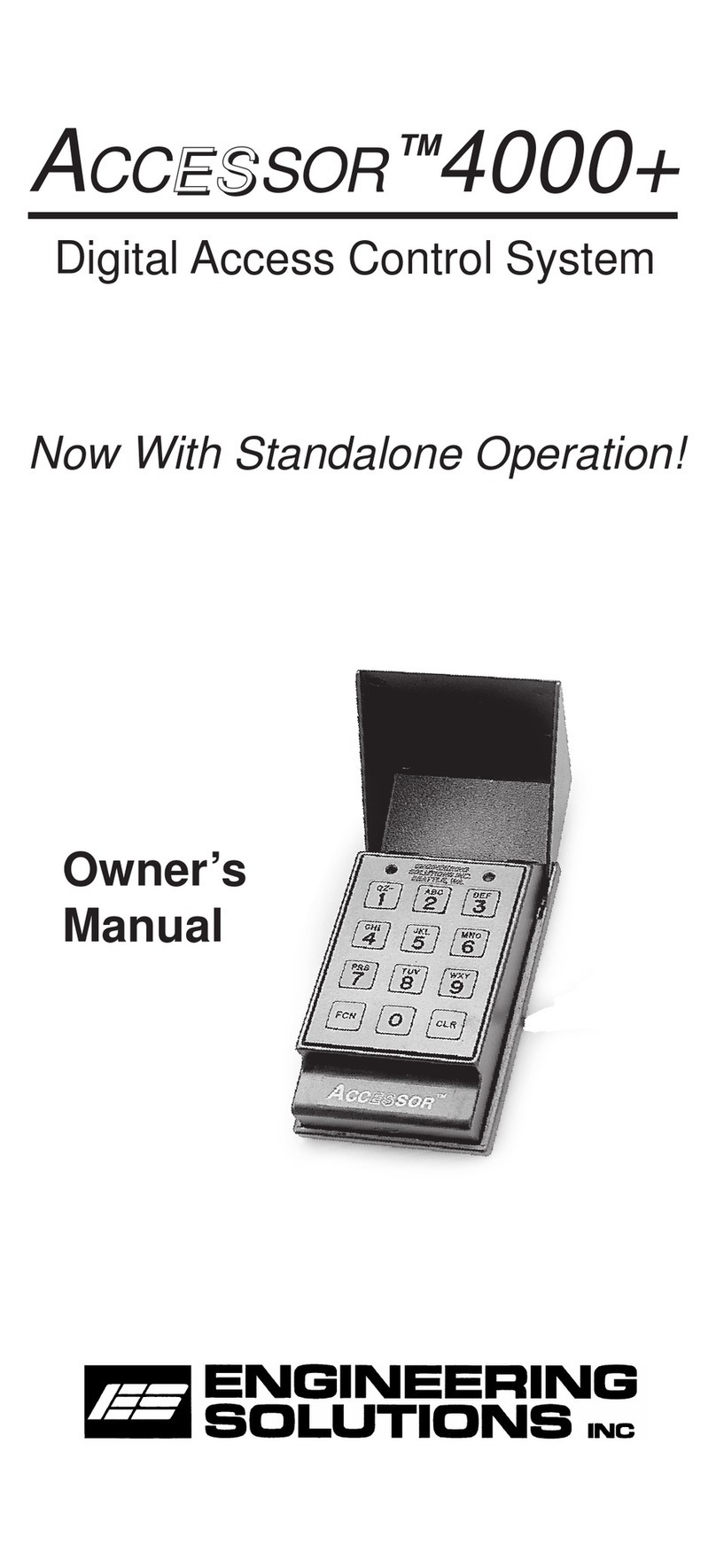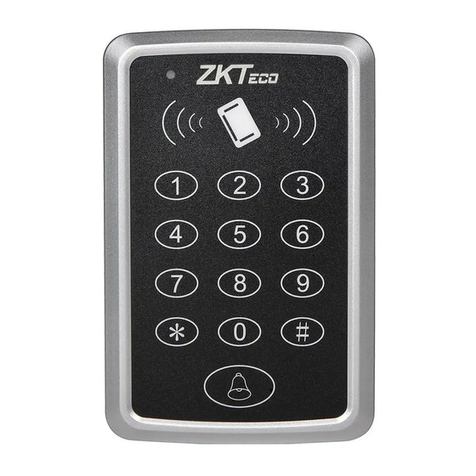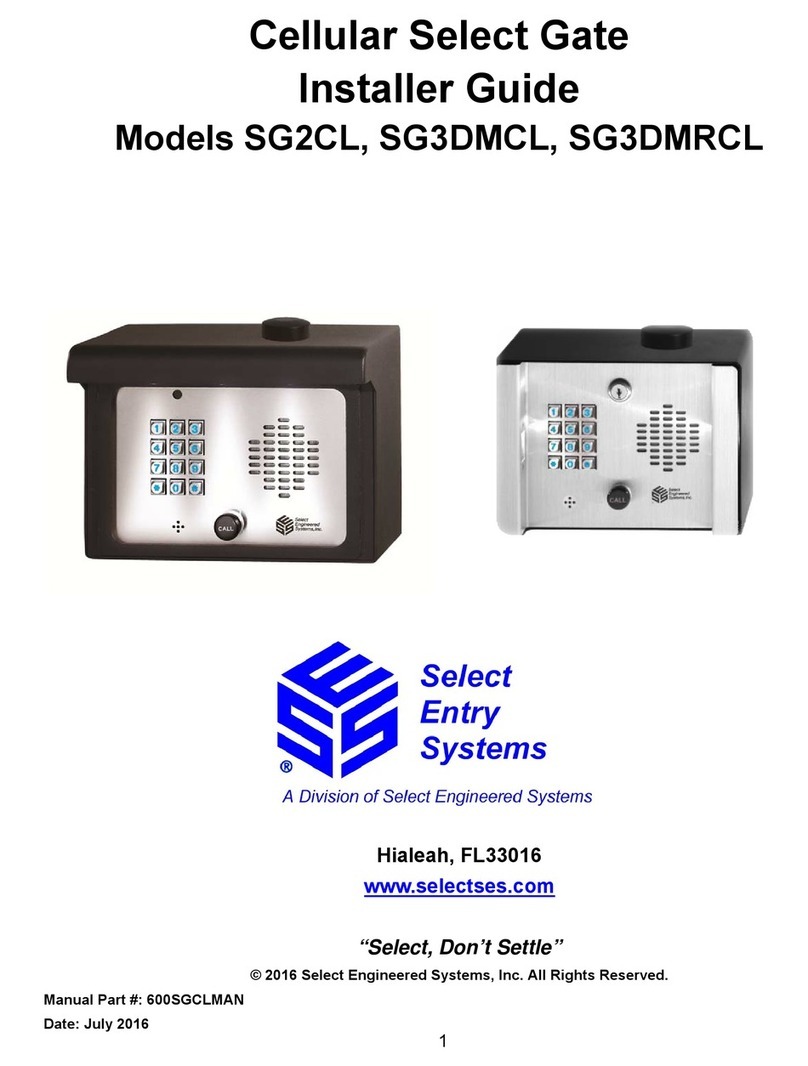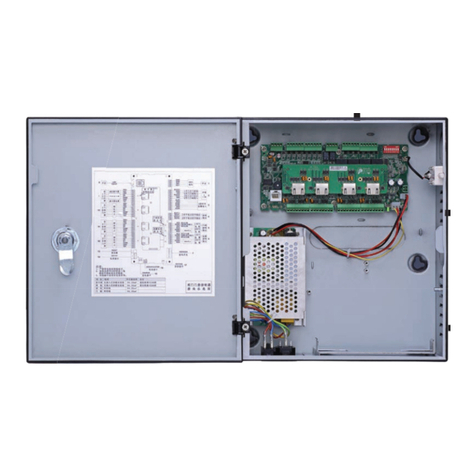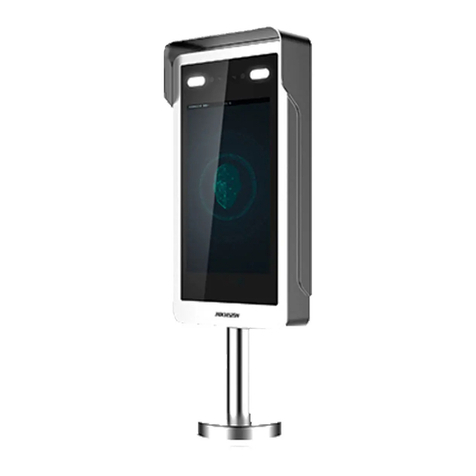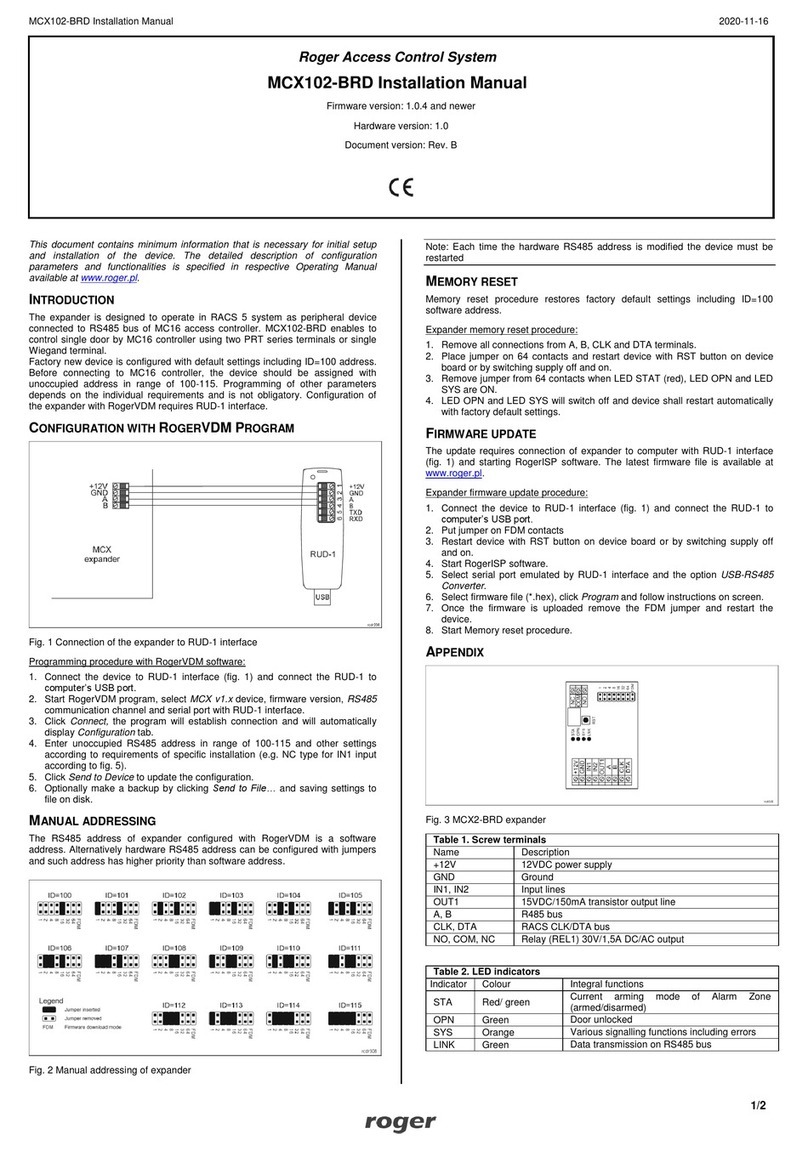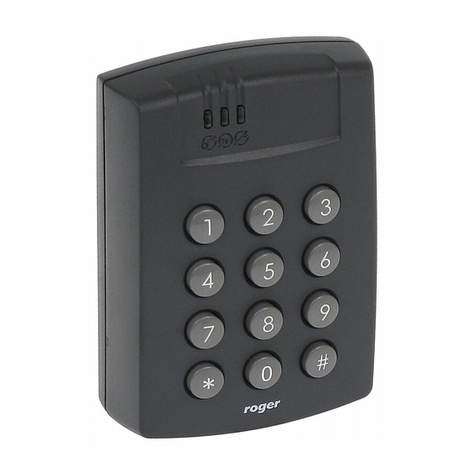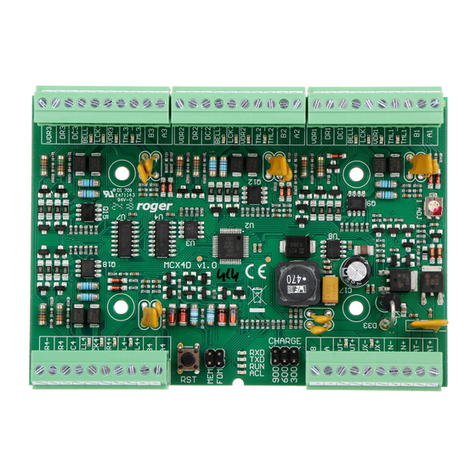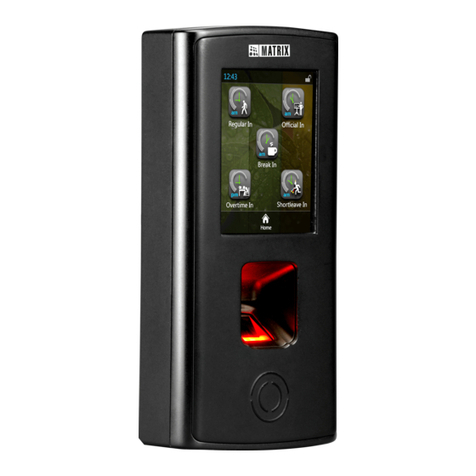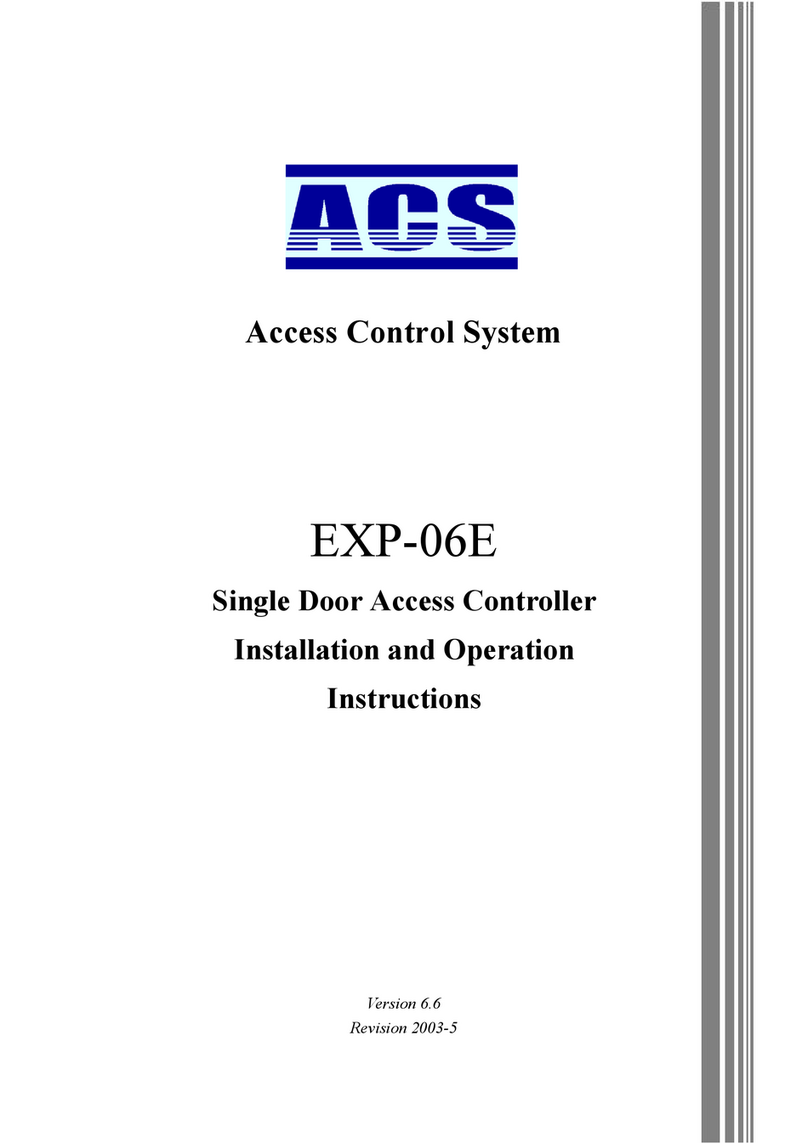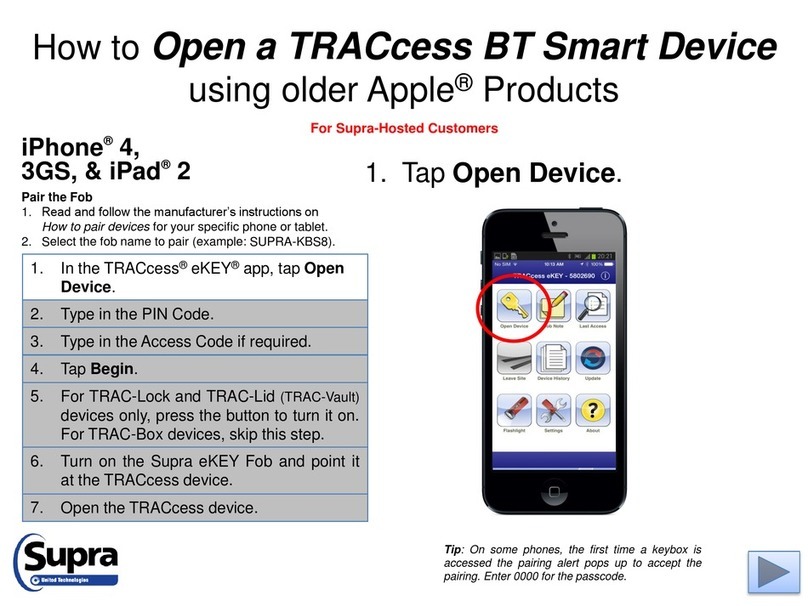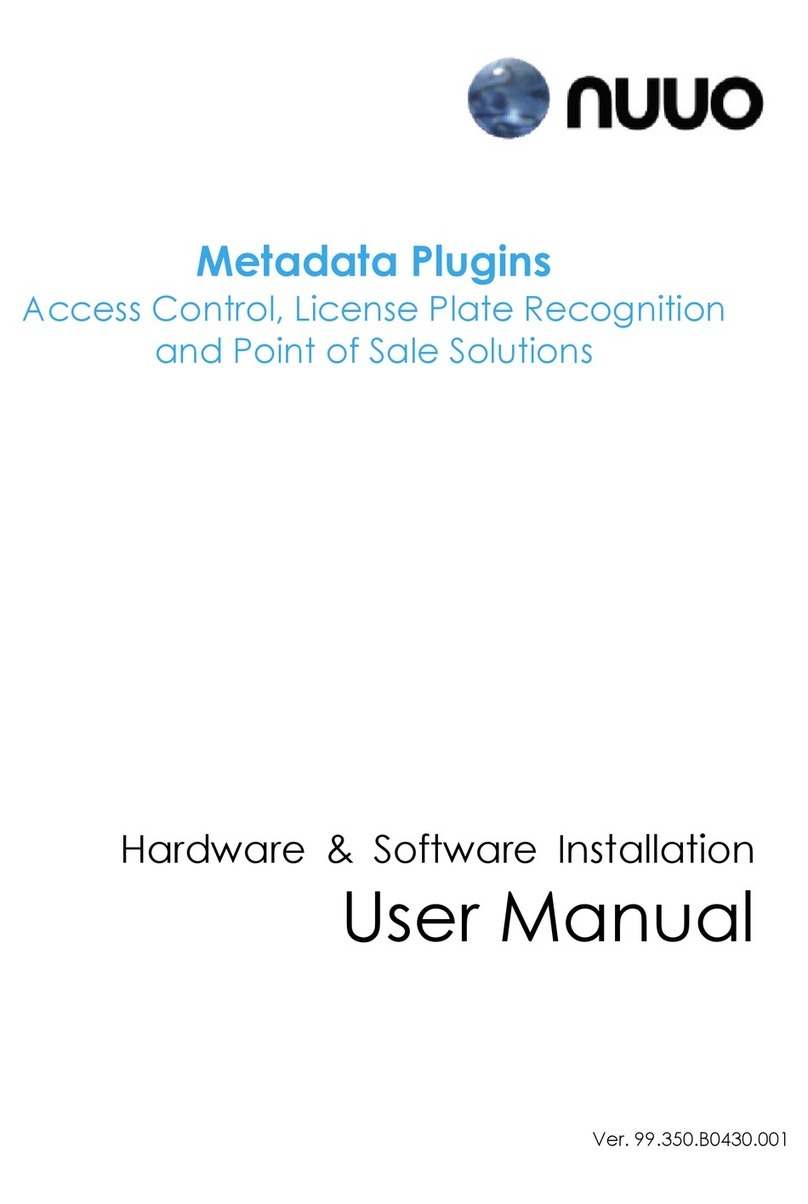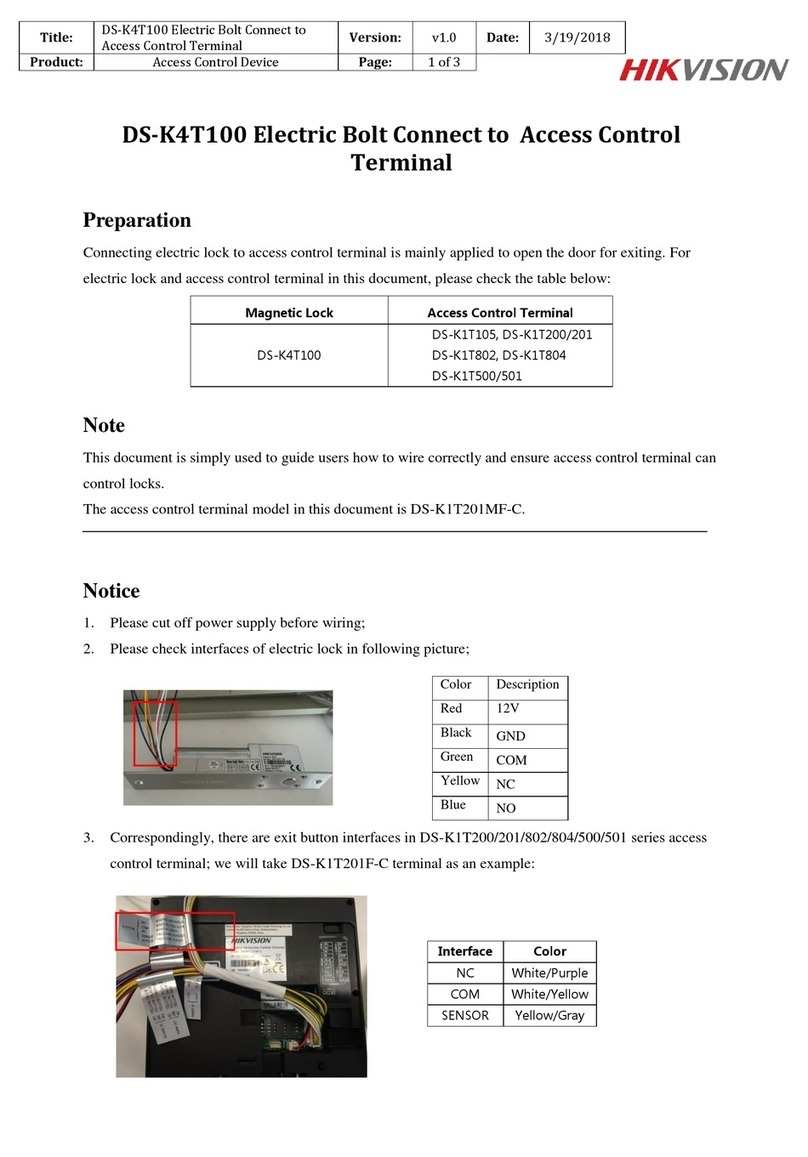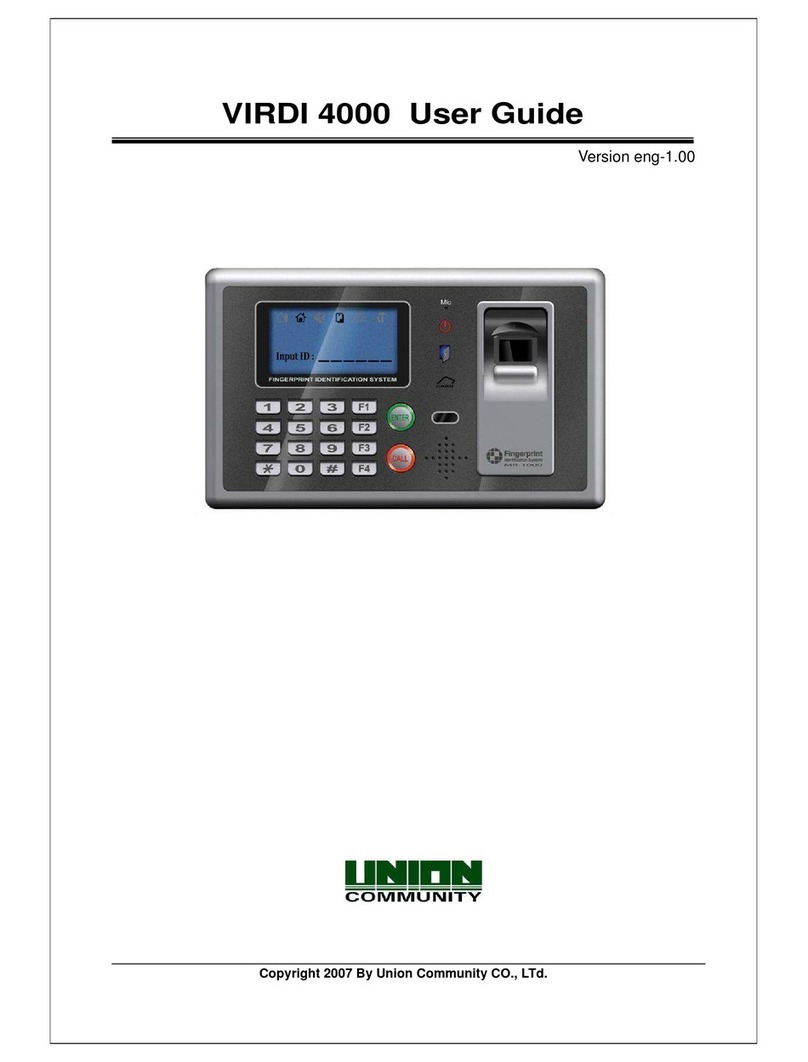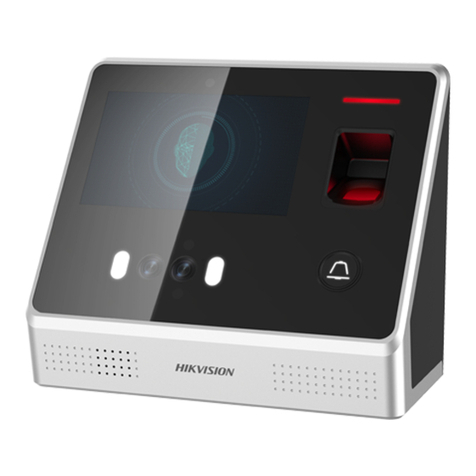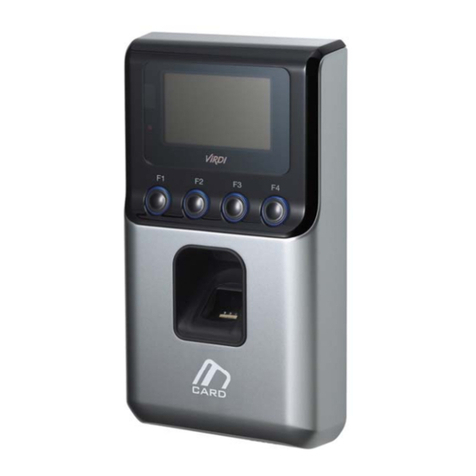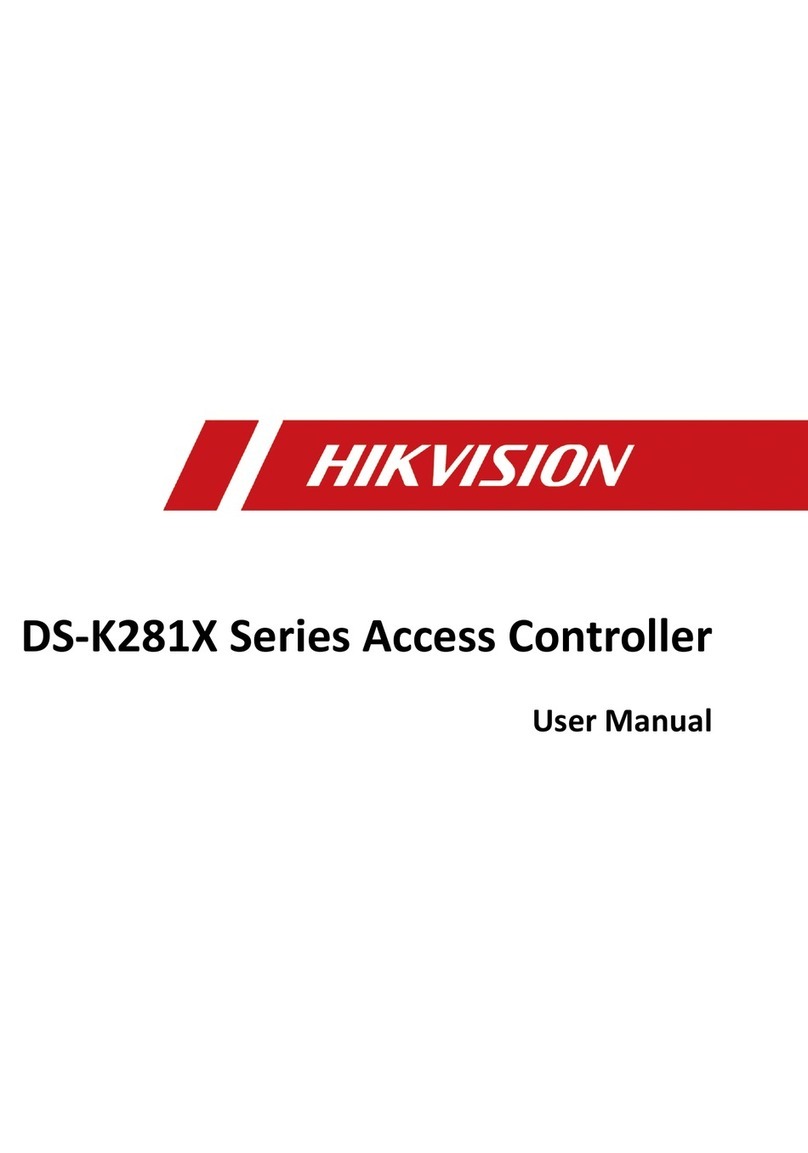
MCT86M-IO-CH-HR Operating Manual 09.07.2020
Parameter defines access key for Desfire file with PCN. 3-KTDES key
is 24 bytes (48 HEX digits), TDES and AES keys are 16 bytes (32
HEX digits).
Manual addressing procedure
Manual addressing procedure enables configuration of new RS485 address with all other settings
unchanged.
1. Remove all connections from A and B lines.
2. Place jumper on MEM contacts (fig. 5).
3. Restart the device (switch power supply off and on or short RST contacts for a moment) and LED
indicator will pulsate.
4. Enter 3 digits of RS485 address in range of 100-115 with any MIFARE card.
5. Wait till device confirms addressing with continuous sound.
6. Remove jumper from MEM contacts and restart the device.
Terminals without keypad can be addressed with multiple card readings where the N number of readings
emulates digit of the address. Three series of readings with any MIFARE proximity card are necessary to set
the address. After each series wait for two beeps and proceed with the next digit. Zero digit is emulated with
10 readings.
Example:
Programming of ID=101 address with card readings:
1. Read card 1 time and wait for two beeps.
2. Read card 10 times and wait for two beeps.
3. Read card 1 time and wait for two beeps.
Memory reset procedure
Memory reset procedure resets all settings to factory default ones including ID=100 address.
1. Remove all connections from A and B lines.
2. Place jumper on MEM contacts (fig. 5).
3. Restart the device (switch power supply off and on or short RST contacts for a moment) and LED
indicator will pulsate.
4. Read any MIFARE card 11 times.
5. Wait till device confirms reset with continuous sound.
6. Remove jumper from MEM contacts and restart the device.
High level configuration (VISO)
The purpose of high level configuration is to define logical functioning of the terminal which communicates
with the MC16 access controller and it depends on applied scenario of operation. The example of access
control system configuration is given in AN006 application note while hotel system configuration is explained
in AN033 application note. Both notes are available at www.roger.pl.
5. FIRMWARE UPDATE
The update requires connection of device to computer with RUD-1 interface (fig. 8) and starting RogerVDM
software. The latest firmware file is available at www.roger.pl.
Firmware update procedure:
1. Connect the device to RUD-1 interface (fig. 8) and connect the RUD-1 to computer’s USB port.
2. Place jumper on FDM contacts (fig. 5).
3. Restart the device (switch power supply off and on or short RST contacts for a moment).
4. Start RogerVDM program and in the top menu select Tools and then Update firmware.
5. In the opened window select device type, serial port with RUD-1 interface and path to firmware file
(*.hex).
6. Click Update to start firmware upload with progress bar in the bottom.















